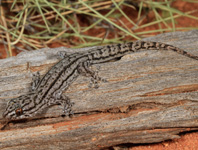Abstract
Specimens of Metasiro from its three known disjunct population centers in the southeastern US were examined and had a 769 bp fragement of the mitochondrial gene cytochrome c oxidase subunit I (COI) sequenced. These populations are located in the western panhandle of Florida and nearby areas of Georgia, in the Savannah River delta of South Carolina, and on Sassafras Mt. in South Carolina. This range extends over as much as 500 km, which is very large for a species of cyphophthalmid harvestmen and presents a degree of physical separation among populations such that we would expect them to actually be distinguishable species. We examined the morphology, including the spermatopositors of males, and sequences from 221 specimens. We found no discernible differences in the morphologies of specimens from the different populations, but corrected pairwise distances of COI were about 15% among the three population centers. We also analyzed COI data using a General Mixed Yule Coalescent (GMYC) model implemented in the R package SPLITS; with a single threshold, the most likely model had four species within Metasiro. Given this level of molecular divergence, the monophyly of the population haplotypes, and the number of exclusive COI nucleotide and amino acid differences distinguishing the populations, we here raise the Savannah River and Sassafras Mt. populations to species status: M. savannahensis sp. nov., and M. sassafrasensis sp. nov., respectively. This restricts M. americanus (Davis, 1933) to just the Lower Chattahoochee Watershed, which in this study includes populations along the Apalachicola River and around Florida Caverns State Park. GMYC models reconstructed the two main haplotype clades within M. americanus as different species, but they are not exclusive to different areas. We estimate COI percent divergence rates in certain cyphophthalmid groups and discuss problems with historical measures of this rate. We hypothesize that Metasiro began diversifying over 20 million years ago.

